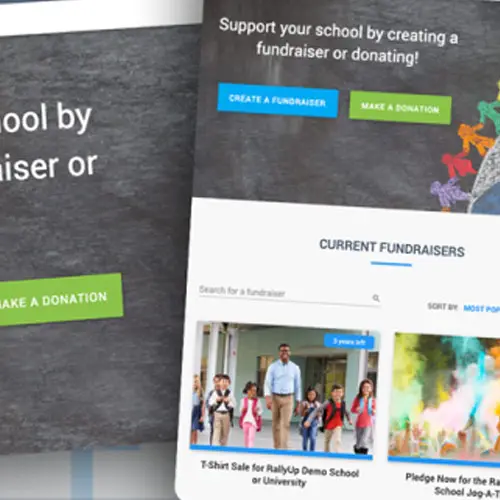Year-End Giving: Best End of Year Fundraising Strategies & Ideas
Learn How to Plan a Year-End Campaign Calendar and Strategy
Craft a Year-End Appeal with Best Practices for Year-end Giving
Implement New Year-End Fundraising Ideas and Raise More Money Than Ever Before
The last six weeks of the year are vital to most organizations’ fundraising efforts. Kicked off by #GivingTuesday and running through December 31, the year-end giving season cannot be ignored by nonprofit fundraisers.
But how does this happen? Why do donors give so generously at this time of year, and how can your organization tap into end-of-year and holiday giving?
In this article, we’ll cover:
Why Is Year-End Giving So Important to Nonprofit Fundraising?
Many organizations receive 30% or more of their fundraising dollars for the entire year during this period. Year-end giving is important because:
- This is the time of year when people want to give back and share. Most traditions, whether it’s Hanukkah, Christmas Day, or Kwanzaa, all include gift-giving, and many also emphasize kindness and charity.
- People celebrate Thanksgiving and are grateful for what they have. Maybe your organization is a part of their sense of community or has directly affected their lives over the year.
- Many people are looking for unique gifts. What do you give to the person that has everything? How about a gift that benefits someone else?
- The end of the year also represents the last chance for donors to make tax-deductible gifts. This is why the closer you get to New Year’s, the more people donate.

Craft the Year-End Campaign Message and Timeline
Since year-end giving is such a critical fundraising strategy, you need to start early. You likely won’t contact donors until mid-October or November, but you must have your entire year-end strategy in place before that time. Don’t worry; once you have an established year-end plan, you can work from there moving forward each year.

Crafting the year-end campaign message or theme is an essential first step. No matter what channel you’re making your appeal through (direct mail, email, Social Media), the core message and overall narrative should translate across channels. This is where the power of storytelling comes in. You need to create a message that resonates with your audience. Just sending out a letter telling them that you need money to make the budget work is not going to be enough. You need to convey how their donations will make a difference and why you are the best organization to make this impact. So start collecting stories and pictures from your beneficiaries now.
Set Fundraising Goals for the Campaign
As with any fundraising campaign, you need to have a specific fundraising plan and goal for your year-end giving campaign. Yes, this means a specific dollar amount and a goal that can be accomplished with these funds.
Start by assessing your current financial situation. How has the financial situation changed since last year’s year-end giving? How close (or far) are you to meeting your financial goals this year?

Understanding where you are can help your team set goals and understand the best strategies to employ for the year-end campaign. Many year-end appeals and campaigns require a fundraising budget – so you need to understand how much money is available.
You will also use this financial information in your year-end fundraising appeal letters. Donors want to know and see transparency in fundraising and organizational budgets.
You may also want to set additional goals besides the big fundraising total goal. These extra goals give your team something concrete to work towards and help you reach your main goal. Additional fundraising goals for year-end appeals could include:
- Establishing a monthly giving program or getting a certain number of supporters to commit to recurring donations
- Winning a specific number of new donors
- Increasing volunteers or engagement among volunteers
- Increasing year-end donations by a specific percentage over last year
Personalize Your Year-End Appeals for Specific Supporters
Next up, you need to target your year-end donors. Prospects for your year-end appeal should include everyone associated with your organization:
- Major gift donors
- Other/all current donors
- All those that have donated in the past
- Business and corporate sponsors
- Organization volunteers and peer-to-peer fundraisers
- Paid staff
- Your organization’s vendors or suppliers
- Those who benefited or were affected by your organization
- Any individuals who have expressed interest in your organization, i.e., those that receive your newsletter
But get this – you cannot send the same appeal out to everyone. Perhaps the most important part of a successful year-end campaign is to be sure to segment and target donors appropriately. Major donors do not want to see the same information as new supporters. If they do, they may just turn into $50 donors.
You also need to know the demographics of your donors since different age groups like to donate and engage differently.

Millennials Fundraising Trends
These young donors are most likely to donate via mobile giving and to friends via peer to peer crowdfunding campaigns. They are ultra-connected to their devices, and as such, they respond to text fundraising campaigns and are active daily on social media.

Generation X Fundraising Trends
These supporters are most likely to fundraise on behalf of your organization and volunteer to engage in other ways. They respond to emails, phone calls, and text campaigns.

Baby Boomers’ Fundraising Trends
Baby Boomer donors are the group most likely to make larger and/or recurring gifts to your organization. You may wish to contact them via phone calls. Many check email and texts regularly.

Greatest Generation Fundraising Trends
It’s no surprise that age 67 and up donors are most likely to respond to direct mail campaigns and give by check. Many also donate by credit card and stay digitally connected, but direct mail should still be used to target these older donors.
Take a Multi-Channel Approach to Year-End Appeals
While direct mail is the traditional year-end appeal method, it’s not the only one you need to employ. As with all fundraising campaigns, you must reach your supporters wherever they are. This means that mobile and online giving need to be offered and virtual fundraising options are key during COVID.
Offer Easy Options for End-of-Year Gifts
Put simply, you want to make donating as easy as possible. To do this and reach everyone, you need to offer multiple ways to make year-end gifts. Donors are busy at this time of year! Don’t give them another thing to add to the to-do list. Make giving so easy that they do it right now.
Our mobile giving options make year-end giving easy.

Mobile First Donation Websites
Our mobile-responsive donation pages look and function well on smartphones, tablets, and other mobile devices. They have larger buttons, preset donation amounts, limited navigation options, and are designed to work on any mobile device.
Nonprofits can direct donors to their mobile donation page by including links in emailed newsletters and social media posts.
Digital Wallets
We offer mobile donations via Apple Pay and Google Pay, allowing many smartphone users to donate without entering credit card details. When a donor doesn’t have to type out credit card details, it makes donating faster and more feasible anywhere. Apple Pay and Google Pay users can donate to your fundraiser in just one click.


Text to Donate
Our Text to Donate feature allows donors to easily support your organization anytime and anywhere from their mobile phones. Supporters will text your fundraising campaign’s keyword to a designated phone number. In return, they will receive a link to your website, auction item (Text to Bid), or other feature to make a simple mobile donation.
Checks by Mail
Don’t forget this final option for taking year-end giving donations. Some donors still like to pay by check (cheque). Though online and mobile giving is much easier to manage, check donations can be especially beneficial for large donations since you won’t need to pay payment processing fees.

A Complete Year-End Fundraising Campaign Calendar
 Determining
your year-end campaign calendar and roadmap is vital to the year-end giving strategy. Build out your calendar by scheduling important dates. For example, appeal dates, non-ask activities, stewardship touchpoints, and production dates (when your
letters or emails need to be completed and sent) should all be carefully considered.
Determining
your year-end campaign calendar and roadmap is vital to the year-end giving strategy. Build out your calendar by scheduling important dates. For example, appeal dates, non-ask activities, stewardship touchpoints, and production dates (when your
letters or emails need to be completed and sent) should all be carefully considered.
Treat your year-end campaign calendar with special care to capitalize on final quarter giving. Let’s dive into how to successfully plan your end-of-year fundraisers by month.

August – Start Planning Your Year-End Giving Campaigns
It may seem early to start year-end planning in August but just think about every department store you visit that is loaded with Christmas decorations at this time of year. People are thinking about the holidays as soon as summer is over. So, take advantage of this and start mapping out the basics early on.
Don’t worry if you didn’t start in August this year, but the earlier you start, the more successful your campaign will be. By starting in August, organizations can work on year-end planning strategies, including:
- Asking crucial logistical questions which will help you map out your fundraisers and understand what direction you will be taking. Who is your target audience? What channels will you implement to engage your audience and spread the word about your cause?
- Don’t go it alone! Assemble an event planning committee to handle the various planning tasks. Even if your organization works with a professional nonprofit event planner, a committee is still needed to direct the planner’s activities. Determine your fundraising goals together and create a roadmap to get there.
- Make a master task list. Brainstorm everything you need to do, from proofreading emails to checking website links to laying out sponsorship and donation letters.
- Review campaign communications from last year, both online and offline.
- Set your metrics and benchmarks so that you can track your fundraiser’s progress and compare them with previous charity campaigns. For example, average open email rates, click rates, and amount raised per email. Also, look at how much money was raised on certain dates in December during past years.
- Compile a list of contingency plans in the case of not being on track with essential benchmarks. Have a plan B, C, and D if necessary to get back on track and make the most of your campaign. These may include going virtual or presenting a hybrid fundraising option this year.

September – Cultivate Supporter Relationships
Once you have the planning of your year-end fundraiser underway, it’s vital to start building rapport with your constituents and connecting them to your cause. Here are a few ideas on how:
- Engage your donors through reports, surveys, and appreciation letters. This is an essential step to hold on to their commitment before you begin the year-end appeal.
- Focus on defining your campaign message. It’s easy to get distracted with everything going on at this chaotic time, but staying focused and on point with your campaign’s mission statement and fundraising goals is essential.
- Make your donors familiar with the great things you’ve achieved during previous charity campaigns by sending out and posting stories about the impact you’ve made on the community and individuals.
- Check that your letters, posts, videos, and emails are concise and engaging; don’t waffle on, as people will stop reading or watching! Also, be consistent with your campaign reminders and messages so that your donors won’t be left in the dark about updates or changes to your fundraiser.
- Start speaking to donors about gift matching to help reach your fundraising goals.

October – Create Hype On Social Media And Get Ready for Year-End Campaigns to Launch
So, you have contacted your donors and are fully focused on your campaign message. Now is the time to add a burst of energy to your fundraiser and create some hype on social media. This will help you engage supporters, spread awareness of your cause and encourage more people to get involved.
Here are a few ideas to consider when creating your social media campaign to generate as much interest as possible for your year-end fundraiser:
- Host a livestream. This allows you to engage with your supporters and show the human face of the story behind the cause you’re raising awareness for. Why not add live interviews and Q& A sessions with a panel, industry experts, your organization’s beneficiaries, or volunteers?
- Post videos and photos that are entertaining, creative, and genuine to your cause, to tap into your followers’ emotional and personal interests. Don’t forget to post the link to your fundraising website to boost the popularity and awareness of the event.
- Use Personal Stories and Highlights on Facebook, Twitter, Instagram, and LinkedIn. This will offer interaction with your donors on a more personal level by creating appealing content about your fundraiser, its progress, and the story behind it by sharing posts. Communicate this with a variety of tweets, polls, questions, and donation stickers.
- Add gamification elements to your social media campaign to add a sense of healthy competition among your donors and increase the chance of giving.
Take a look at our Top Social Media Tips and Trends to get the most out of your Year-End fundraiser.
Don’t forget that October is the perfect month in your year-end fundraising calendar to focus on finalizing schedules, copy and campaign details.

November – Kick-off Year-End Campaigns
November is when holiday year-end campaigns kick off. Remember that Thanksgiving is an opportune moment to ask people to support a good cause, as it evokes many emotions rooted in kindness, gratitude, and appreciation. Focus on the topic of ‘Thankfulness’ in your campaign, as this is at the center of the holiday spirit. Let your supporters know that donating is a great way of showing gratitude, which ties in perfectly with the holiday. Connect the theme of gratitude in your social media posts and correspondence to encourage maximum giving.
Don’t forget to:
- Send out an email blast of donation requests the week of Thanksgiving.
- Run Google ads and activate special donation forms the week before Thanksgiving.
- Remind your donors how easy it is to donate to your cause, especially at such a busy time of year. Mobile giving options simplify the donation process and expand your donor’s reach, it’s a win-win. Knowing that making a donation is only a click away from a mobile device anywhere in the world, can have a huge impact on reaching your fundraising goals.
- Post ‘thank you’ messages to your supporters on social media on Thanksgiving to show your appreciation for their support. Recap the year’s accomplishments and include an emotionally resonating and memorable story about a benefactor of your charity.
- Prepare your donors for #GivingTuesday as it is often at the top of the list of popular digital fundraising campaigns to participate in during the holidays.
- Keep up with your social media campaign and focus on the theme of gratitude.

December – Keep Up The Momentum and Don’t Stop Asking
By December, your aim is to create a sense of urgency. Send out the polite message that donating sooner rather than later is better. Remind your supporters that the New Year is just around the corner, and be sure not to neglect the fact that December 31 is a tax deadline. This will strengthen your Year-End appeal, as many people are motivated to donate by tax benefits.
Consider these strategies to pull in more last-minute donors:
- Multiple messages have power. Use a variety of themes in your messages, such as tax benefits, heartfelt stories, holiday traditions, and alternative giving such as Text-to-Donate.
- Amp up your social media strategies to generate more interest and any last-minute donors. By asking your current donors to share and reshare posts and links to your fundraising page, you could reach new supporters in the last hours of your campaign.
- Update your donors on the progress of your fundraising goals and how close you are to reaching them. This can encourage last-minute donations to achieve or even exceed your goals.

January – Analyze your Success and Make a Plan
It’s essential to thank your donors immediately after your year-end fundraiser. Make sure to follow up with donors after completing your campaign to retain a strong and trusting relationship with them.
Provide feedback about the following:
- Did you reach your fundraising goal?
- How much the fundraiser grossed.
- What impact the fundraiser will have on the community and individuals.
- Send photos and testimonials of the event and tag donors in photos on social media, commenting on how valuable their support was.
- Create a personalized digital message or handwritten note with a selection of photos from your fundraiser.
- Send a customized thank you letter via post or email that shares how their donations will be used and the impact they have made. Attach photos and testimonials if appropriate.
- Make sure to show gratitude and not ask for more support immediately. Continuing to ask at this juncture is likely too aggressive and could lead to donor attrition. You’ll have time to do this later.
- Send the letter within 48 hours after the charity event when possible, so the event is fresh in everyone’s minds.
As for your organizational needs, it’s crucial to compile reports showing your campaign results. Collect data on the total number of year-end donors, the amount raised, volunteers/fundraisers mobilized, and the number of social shares. This information will be priceless when building your next campaign. Look to the new year with an annual fundraising plan that includes this data.
Guidelines for Writing Successful End of Year Fundraising Letters
End-of-year fundraising appeals sent by direct mail are still important. With direct mail, the letters can be much longer and fuller as long as the content is engaging. Assume that direct mail recipients are not going to your website and will make a decision to make a gift or not, based on the information you are providing in the year-end appeal letter. The tone is often a bit more formal here as well, stating statistics and perhaps financials. Include a donation envelope and mention online donation channels here, as many people prefer to donate via a credit card.

Follow these guidelines for end of year appeals by mail:
Keep It Simple.
Be explicit with explaining your cause and needs up-front, and reiterate them in the closing of your year-end giving letter. People often read only the opening and closing paragraphs of these letters and decide whether or not to give based on that reading alone.
Be Positive!
Don’t request donations due to negative cash flow at the end of the year. Donors are motivated to change the world through positive contributions and gifts to help your organization accomplish its goals, not as a financial rescue mission.
Make it Easy to Donate.
Include a link to your fundraising website and text to donate keyword, so people can easily make financial contributions. Also, include a reply slip and a self-addressed envelope for those who prefer to send in checks via mail.
Tell Your Story.
Storytelling is essential to year-end campaigns, as people are motivated emotionally to give. Offer them a story of your impact or work that they cannot resist. Make it warm and fuzzy!
Follow the Basics for Easy Reading.
Be sure to utilize white space by using bullet points and no long paragraphs. Call out important information with bold fonts.

Reach Out to Supporters with a Final Year-End Appeal
Don’t give up early! The last three days of the year are the most important for annual giving campaigns. Your team may be on vacation, but your software and technology can still work for you. Schedule automated emails or send out quick social media posts, during this time. Ask your supporters to make a last-minute donation before the clock strikes midnight on December 31st to help your organization reach its annual appeal goal.
Don’t Forget to Thank Your Donors
Be sure to recognize donors’ contributions by sending a thank you letter, listing donor names on your website, and recognizing them at fundraising events. You can usually wait until early January for this, and cite the success of your year-end giving campaign in the letter.
Always remind donors that annual fund gifts are tax-deductible in accordance with IRS and CRA guidelines.

Kick-Off a Strong Year-End Giving Campaign with Giving Tuesday
Each year, Giving Tuesday is hosted around the holiday season. It is a global fundraising campaign aimed at transforming the holiday season from receiving to giving. The goal is to get people to give some of what they typically spend during the busiest holiday shopping days following Thanksgiving, Black Friday & Cyber Monday towards charitable causes.

Giving Tuesday has become the official kick-off of the year-end giving season. Don’t miss out on this opportunity to start your campaign with a bang. You’ll have lots of help, as the #GivingTuesday movement provides free publicity and resources. You can officially join the Giving Tuesday movement here.
Ideas for Year-End Fundraising Campaigns
So we’ve discussed creating a timeline and goals for year-end giving, crafting a steller message, personalizing that message for specific donors, and providing easy ways to give. Incorporating specific fundraising ideas can also help in meeting your year-end appeal goals. Here are some ideas to consider:
- Holiday Sales Fundraising can be included as part of your year-end fundraising. Sell wrapping paper, wreaths, candles, sweets, and other festive goods. Our Simple Stores
make it easy to sell online and even combine these campaigns with P2P fundraising pages.
- Nonprofit Crowdfunding Campaigns such as holiday walkathons or Turkey Trots are popular and fun year-end fundraising events. Use our crowdfunding
software to ignite the spirit of fundraising competition.
- Community Serve-a-thons – Schools and charities can help spread the season’s message of giving by hosting a serve-a-thon. This event encourages supporters to raise money in support of a community service project.
- Recurring Donation Campaigns – Promoting monthly membership and recurring donation campaigns is a solid strategy to boost year-end fundraising. Recurring donors generally give much more over the year than one-time donors. Entice them
with a gift for first-time members.
- Find Matching Gifts Donors – Here is another way to raise more money from donors without asking them to give more of their own money. Matching gifts is a type of corporate giving program that can be one of many strategies to boost your year-end fundraising goals with little additional effort.
